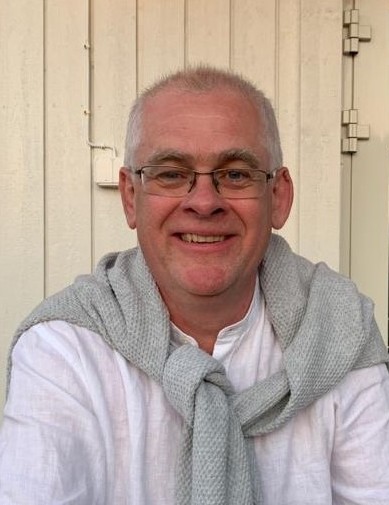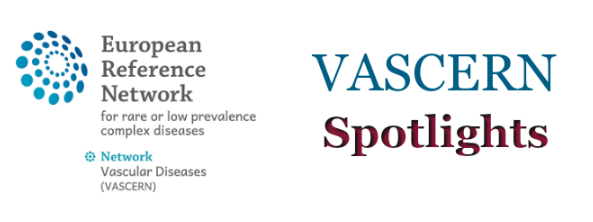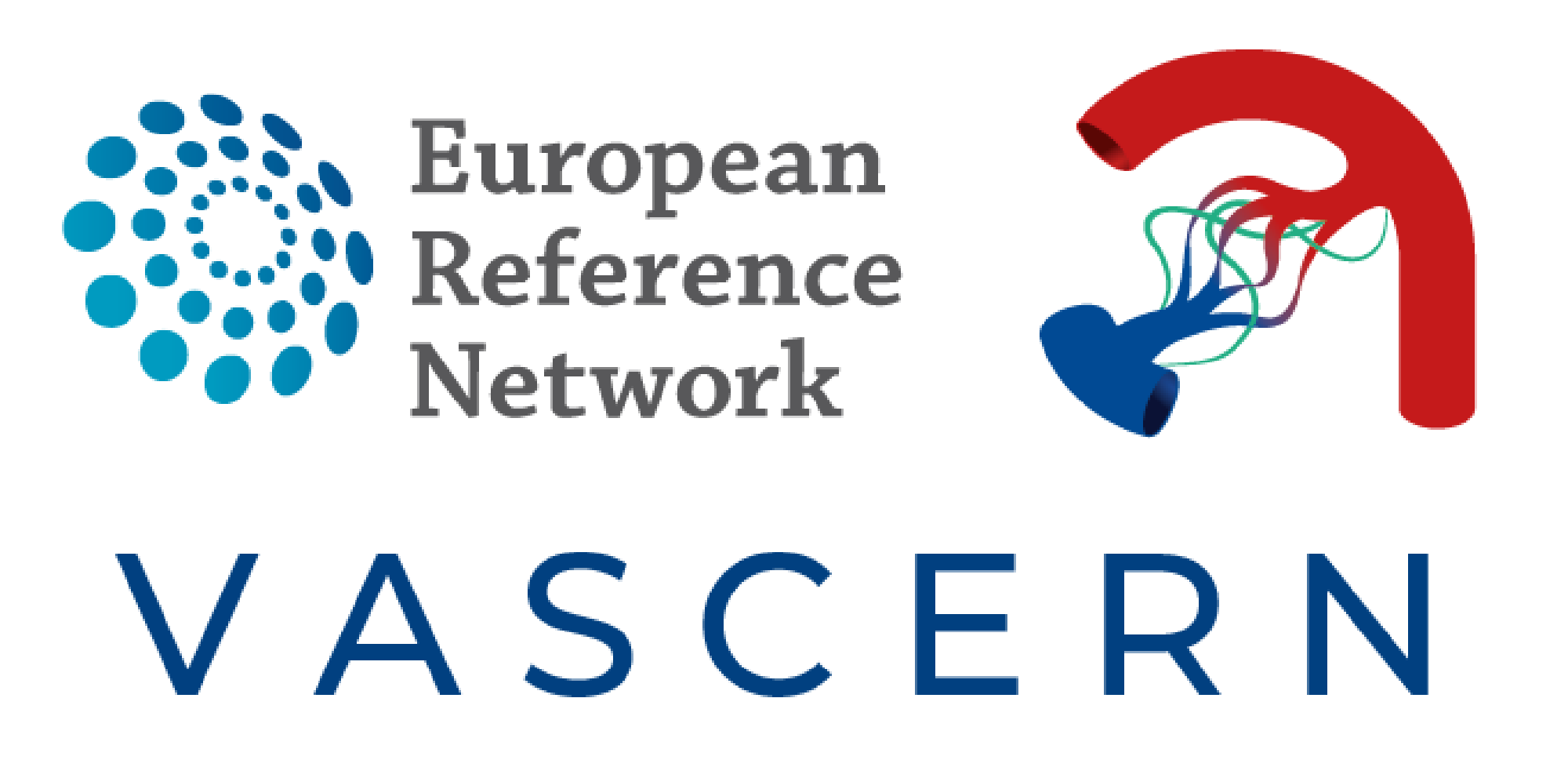

We are very happy to present our first VASCERN Spotlights article of 2021 featuring Dr. Erik Björck: a clinical geneticist from Stockholm, Sweden and member of the Heritable Thoracic Aortic Diseases Working Group (HTAD WG). Dr. Björck tells us why he enjoys being a clinical geneticist, the challenges of being a healthcare professional in the rare disease field (and the importance of raising awareness for these rare diseases) as well as the challenges ahead for VASCERN and the ERNs.
1. What disease(s) do you specialize in (or what is your medical specialty) and what interested you in this field?
I am a clinical geneticist, which I really enjoy. It is a specialty that can be both narrow and wide at the same time. Our work can range from prenatal diagnosis and difficult ethical questions to very technical questions, such as the significance of a specific mutation. I mostly work with connective tissue disorders, eye diseases, Huntington’s disease and pre-implantation genetic diagnosis. The connective tissue disorders such as Marfan syndrome and HTAD are something I particularly enjoy. So I see a wide variety of patients and I have always been comfortable having this wide area of knowledge as it has made it easier throughout my career to change and evolve and keeps things interesting. I also do research and am a teacher, so I like having this variety of activities.
I think that through our work we can create a common community of practice so that we can learn from each other and slowly come closer.
2. How did you become involved in VASCERN?
Karolinska University Hospital is involved in 18 of the European Reference Networks (ERNs) and this is due to Professor Ann Nordgren, as she knew about this opportunity early on, due to her interest in rare diseases, and prepared us for the call that was coming. Due to my interest in connective tissue disorders and Marfan syndrome in particular, I was prompted to apply to join the HTAD WG. It is thanks to her that I started my application and during the process I was contacted by Dr. Nader Ghaffarpour (member of the Vascular Anomalies (VASCA) working group) and we joined our efforts for the application and were accepted.
3. What is your greatest hope for VASCERN?
In a certain way, my hope is to make Europe a little smaller, by connecting the countries and the experts in the field of rare diseases. I think that through the ERNs we wish to give all rare disease patients the same standard of care, wherever they may live in Europe, and this is particularly important for rare disease patients. I think that through our work we can create a common community of practice so that we can learn from each other and slowly come closer. This is often very political and the healthcare systems in each country are different but I think through meeting together we see what we need to improve and in the end this will benefit the patients. Guidelines, for example, should be viewed in two different ways: there’s the final guideline document itself that is important but the roadmap towards creating guidelines makes us interact and helps us realize that we all have the similar issues and problems so that we can solve them and grow together.
The best university is the patients, as we learn so much from them. Since rare disease patients are rare, it is hard to learn about these diseases without being in the community and meeting patients and other experts.
4. What challenges do you face as a healthcare professional in the rare disease field?
One of the main challenges is to raise awareness and spread knowledge for these uncommon disorders and to also give these patients a voice as they often might be at a higher risk of aortic dissection (e.g. in HTAD) or should receive specialized care. I think one of the main challenges is to get other professionals to understand that some of these patients may require some additional specialized care. The best university is the patients, as we learn so much from them. Since rare disease patients are rare, it is hard to learn about these diseases without being in the community and meeting patients and other experts. The diseases are rare, so another challenge is to gather knowledge and accumulate data on these diseases. However, we still need a good way of sharing phenotypes with other healthcare providers without losing control of our data. There is also the challenge of helping these patients navigate within the healthcare system, as for some disorders there may be a good pediatrician but once they are too old for the pediatrician they are lost and cannot find a specialist doctor to follow them as an adult. There has been a lot of work in thinking about this problem and there are diverse ways of solving it.
5. What in your medical career are you most proud of?
When my work makes a difference for an individual patient or their family.
6. Are you currently involved in any research projects or clinical trials? If so can you please describe them briefly?
I have discovered throughout my medical career that what I do is make my clinical work academic. I do research in genetic disorders (inherited connective tissues disorders and eye disorders) and medical pedagogy. I am now involved in a project where we study the process of learning in experienced medical doctors. I also enjoy publishing case reports on the patients I see in my practice.
The benefit of what we have right now in VASCERN is that we all talk together regularly, so we start to know each other well and can therefore ask questions and really learn from each other.
7. What VASCERN activities do you participate in and which are your favorite?
I participate in the monthly HTAD WG calls and attend the annual seminars (e.g. VASCERN Days 2020) and try to contribute to the various projects of the HTAD WG group (e.g. Pills of Knowledge videos, Do’s and Don’ts factsheets). What I really enjoy most are the complex case discussions with the group, where we all learn so much.
8. What are the main achievements of VASCERN to date? What challenges does VASCERN still face?
The main achievement in my opinion is that we have brought Europe closer in terms of medical care by creating these networks. The challenge is now to consolidate the work of the ERNs and make them sustainable. Integrating them in the national health care systems will be very challenging as we encounter so many different types of medical systems in Europe. In Sweden for example we have 20 different regions, which are independent in making decisions and there is a continuous effort in Sweden in order to make health care comparable between regions. There is also the challenge of expanding our network while remaining efficient: if we grow too much it is not manageable but if we don’t involve enough countries and HCPs that’s not great either; so we need to find a balance. The benefit of what we have right now in VASCERN is that we all talk together regularly, so we start to know each other well and can therefore ask questions and really learn from each other.
I would also like to add that I think both Professor Julie de Backer (HTAD WG Chair) and Professor Guillaume Jondeau (VASCERN coordinator and HTAD WG Co-Chair) are doing a really great job and I admire their persistence and their efforts in the success of VASCERN. I think Guillaume as coordinator has been really great at navigating the administrative business that at the start was enormous, and now we see a better balance between administrative tasks and the actual medicine itself.


